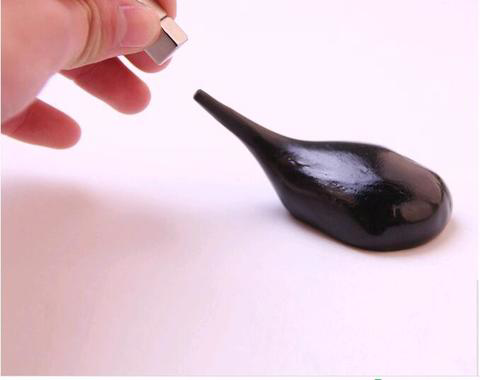With the Fourth of July quickly approaching, we here at the Adventure Science Center are looking at science experiments that can help bring some star-spangled science into your home! This special DIY science activity will have you “reaching for the stars” as you learn more about different molecular structures in our world.
You’ve seen TONS of slime recipes and videos online, but what exactly IS slime? Recommended for scientists aged 5+, this experiment explores the unique properties of this ooey-gooey substance and how we can combine a few simple ingredients to make an “attractive” batch of magnetic slime.
Materials
- School Glue
- Liquid Starch
- Iron Oxide Powder
- Red, White, and Blue Confetti
- Neodymium Magnets (a typical fridge magnet isn’t strong enough)
- Disposable Mixing Bowls
- Craft Sticks
- Paper Towels
- Disposable Gloves (optional – to keep your hands clean)
Activity
Lay down some paper towels, this experiment can get a little messy! Use one of your craft sticks to mix about 1/4 cup of school glue with 2-3 tablespoons of iron oxide powder in a disposable mixing bowl. Then, add 1/4 cup liquid starch. Continue stirring until the mixture gets thick and sticky. At this point, you can use your hands to mix the ingredients together, adding your confetti of choice. Use disposable gloves to prevent getting messy iron oxide dust on your hands. Once you’re glittery slime is ready, use your magnet to make your slime “reach for the stars!”
Psst… If you want to do this activity without the magnets, you can! Simply leave out the iron oxide and use food coloring of your choice to make super fun slime with a festive flair.
The Science
This experiment teaches you how to make a polymer. A polymer is defined as a substance that has a molecular structure composed of many repeated subunits. Some polymers are stretchy and gooey like this slime, while others are hard and rigid like the glass in your windows. This slime wasn’t just gooey, it was also magnetic! Magnets can be found everywhere from the toys in your room to NASA’s Mars Pathfinder. Magnets attract magnetic materials like iron oxide by creating an invisible field around itself called a “magnetic field.” This field is what caused your slime to move towards your magnet when they were placed near each other!
Further Exploration
- Does it make a difference in how strong the magnet pulls if you put something between the slime and the magnet? Try wrapping the magnet in plastic wrap, a paper towel, or even a scrap piece of fabric and see if any of those materials makes the magnet less effective.
- Polymers can be found everywhere – including your home! Look around your house to find different polymers. How do they compare to the slime you made? Are they gooey and sticky or hard and rigid? How does their structure help serve a purpose in your home?
Safety and Clean Up
- Clean up any slime residue using warm, soapy water.
- This activity is recommended for ages 5+. Do not allow young children to put the magnets or slime in their mouth.
- Do not eat the iron oxide and try not to breathe in excessive amounts.
- Since these magnets are very powerful, fingers can get pinched between them. We suggest using a row of magnets and avoid trying to seperate them.
- Be aware that powerful magnets can be harmful to computers, cell phones and other electronics. Keep items such as these away from your activity area to avoid damage.
Want to experience even MORE star-spangled science? Join us on July 4 for our annual Red, White & BOOM Independence Day celebration!





